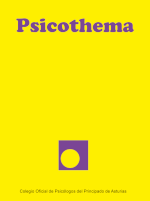Abstract
Background: Few studies have explored the prevalence and unidimensional structure of Non-Suicidal Self-Injury (NSSI) in Spanish adolescents. Method: in this study, we estimated the prevalence, types, and functions of NSSI in 1,733 Spanish adolescents, and we tested the unidimensional factorial structure of non-suicidal self-injury. Results: 24.6% of the adolescents referred to having self-injured at least once during their lifetime, and 12.7% had self-injured using more severe methods of NSSI. The most frequent types of NSSI were interfering with wounds (14.6%), scratching (12.5%), and hitting (11.7%). We found no differences between genders in NSSI frequency. The majority of the participants who self-injured referred to intrapersonal functions. The confirmatory factor analyses of the ISAS-I structure showed a single factor with 10 items, thus supporting the unidimensionality of the construct of NSSI. Conclusions: NSSIs reflect difficulties in regulating emotions or managing interpersonal relationships in young Spanish people, and these behaviours seem to constitute a unique and latent dimension. Thus, there is a need for intervention programmes focused on managing problems of emotional regulation and maladaptive self-injury behaviours.Downloads
Download data is not yet available.
